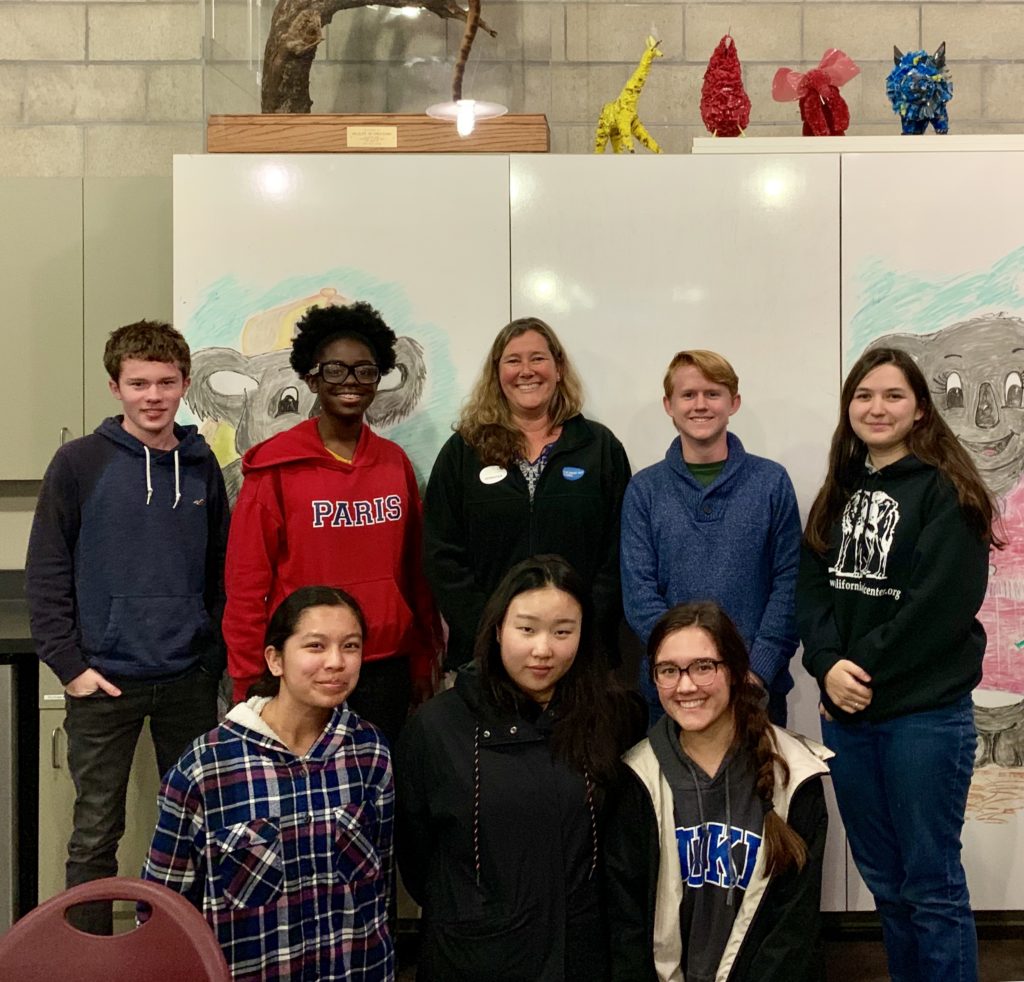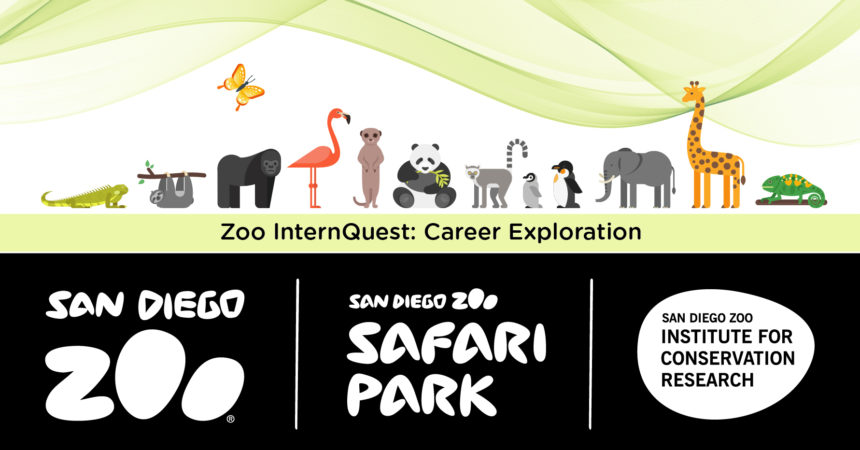Zoo InternQuest is a seven-week career exploration program for San Diego County high school juniors and seniors. Students have the unique opportunity to meet professionals working for the San Diego Zoo, Safari Park, and Institute for Conservation Research, learn about their jobs, and then blog about their experience online. Follow their adventures here on the Zoo’s website!

In our third week of InternQuest, we met up with Jennifer Toby. Her official title is Researcher at the Institute for Conservation Research. In more simple terms, she is an Animal Behaviorist. Animal behaviorists study common behaviors, social dynamics, and mating habits of different species to help them understand how animals think and why they display certain behaviors. Ms. Toby works directly with the Zoo’s own animals to study their behavior. She also does some field work in different parts of the world where she studies wild animals. Her job helps the Zoo’s staff provide better care for the animals by allowing keepers to understand the group dynamics and social needs of each of the animals. This improves the success rate of ventures such as breeding and relocation of animals. Her work at the Zoo also aids researchers all over the world in their own studies so that they, too, can understand and better care for their wildlife.
Ms. Tobey works at the Institute for Conservation Research, which is the conservation wing of San Diego Zoo Global. In order to do that, the organization does have people working in the home ranges of these animals, but just as importantly, they provide information gathered from animals at the Zoo to researchers in the field. This practice helps expedite the research done in the wild because it can provide a controlled variable that they otherwise would have to spend a long time establishing. For example, a lot of work has been done to study the scent glands of koalas in order to try and establish a biofence. This is a border that would deter them from entering certain areas purely because of the scent. The Zoo aided in this research by analyzing the scent glands of their own koalas. Through this research, Miss Tobey and her team found that koalas are actually attracted to the scent of other koalas. By determining this in a zoo setting like the San Diego Zoo, where the koalas are closely observed and monitored, they were able to save the researchers a lot of time because they didn’t have to find wild koalas to conduct that study.
Being that the San Diego Zoo has had koalas for such a long time (since the 1920s), they have kept a vast record of all their koalas. When Ms. Toby began working at the Zoo, there was already 18 years’ worth of data concerning koala breeding and birth dates, gestation records, lineages and their weights. This has allowed the Zoo to learn crucial information about koala breeding habits, which improved breeding success and drastically increased the success rate, which previously was only successful about one out of every three breeding attempts. Now, the koalas breed fairly easily, and they are able to avoid using artificial insemination, which does not hurt the animals, but it is more expensive and not as natural. The same has been applied to other species of animals with complex social structures. For instance, bonobos can be moved between zoos more effectively because now, we know that male bonobos will do better if they travel with their mother who will protect them when introduced to new individuals. Through close observation, the keepers are able to avoid any conflict between the animals.
One of Ms. Toby’s projects includes her work in the Blue Mountains Koala Project. The Blue Mountains is a region in Australia heavily populated with eucalyptus trees. Historically, there were apple orchards in the Blue Mountains, but since most of those are gone, the koalas are now free to return to the area to eat the Eucalyptus leaves that are left in their place. Researchers in Australia sought to closely monitor that population to make sure that it would remain stable and to track its growth. A large part of this project included tagging and tracking the koalas. This allowed the researchers to have a relative idea of how many koalas were in the area and where they were going throughout the year. This area is not only a national park, but it is also a World Heritage site, and because of that, it is important that this area is protected from human threats. Through the use of radio collars and ear tags, the Blue Mountain koala population can be monitored by the Australian researchers to ensure that the population remains stable.
By utilizing the knowledge collected in the Zoo, researchers working on the home continents of many species kept here are able to more efficiently conduct said research. They have a much faster and just as reliable way of collecting data because the populations at the Zoo are more easily studied than those in the wild. The work done here at the Zoo by behaviorists such as Ms. Toby allows animals in captivity to enjoy better care as well as those in the wild to be better protected from human threats.
Brenda, Conservation Team
Week Three, Winter Session 2019


